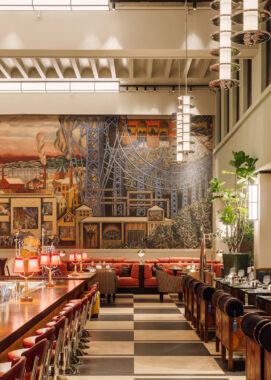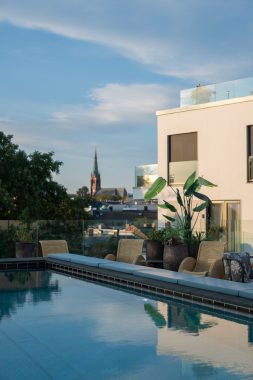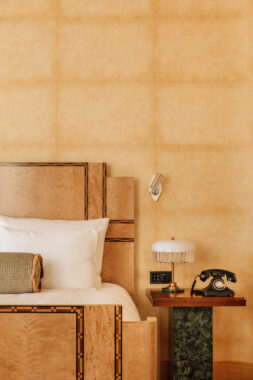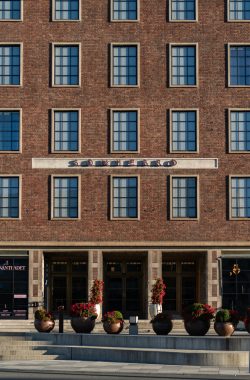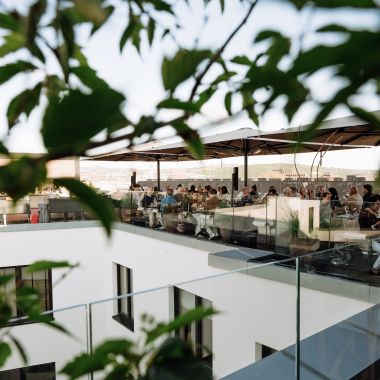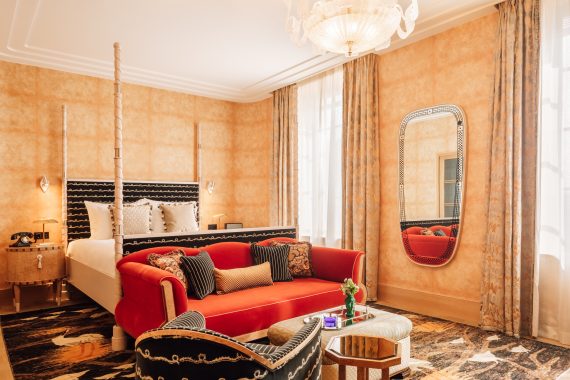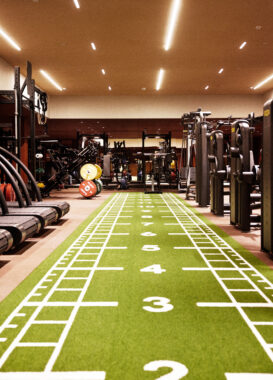Sommerro marks the rebirth of a 1930s landmark into an Art Deco Hotel and hotspot in one of Oslo's loveliest neighbourhoods; Frogner.
Located behind the Royal Palace, and only a 10 minute walk from Nationaltheatret station, where the airport express train comes in, Sommerro is the ideal base from which you can explore the capital.
Sommerro is an open house with a hub of restaurants and bars, including an all-day open brasserie with live jazz every day, a vibrant rooftop outlet and the city's best Afternoon Tea.
Sommerro also boasts a small cinema with weekly screenings, a vast wellness space and state-of-the-art gym. Not to mention: the city’s first rooftop pool and sauna – a year-round destination with sweeping views over Oslo.
Sommerro won the prestigious award "Best Hotel in Norway" by the Grand Travel Awards in 2022, 2023 and in 2024, and has also been included on the prominent "Hot List" of Condé Nast Traveller, as well as the "IT List" of Travel + Leisure. To see recent press coverage of Sommerro and Villa Inkognito, please visit this site.
LIGHT, POWER, WARMTH
The three words etched into the facade of the old power plant nearly 100 years ago – Lys, Kraft, Varme (Light, Power, Warmth) – still form the core of Sommerro's soul. Today, these values live on in a house that pulses with life, hospitality, and community.
Sommerro is a social hub – a place where both locals and visitors can meet, converse, create, and relax. Here, people are at the center, and the atmosphere is shaped by warmth, diversity, and authentic experiences. Sommerro is more than just a hotel – it is a lively meeting place filled with energy and heart.
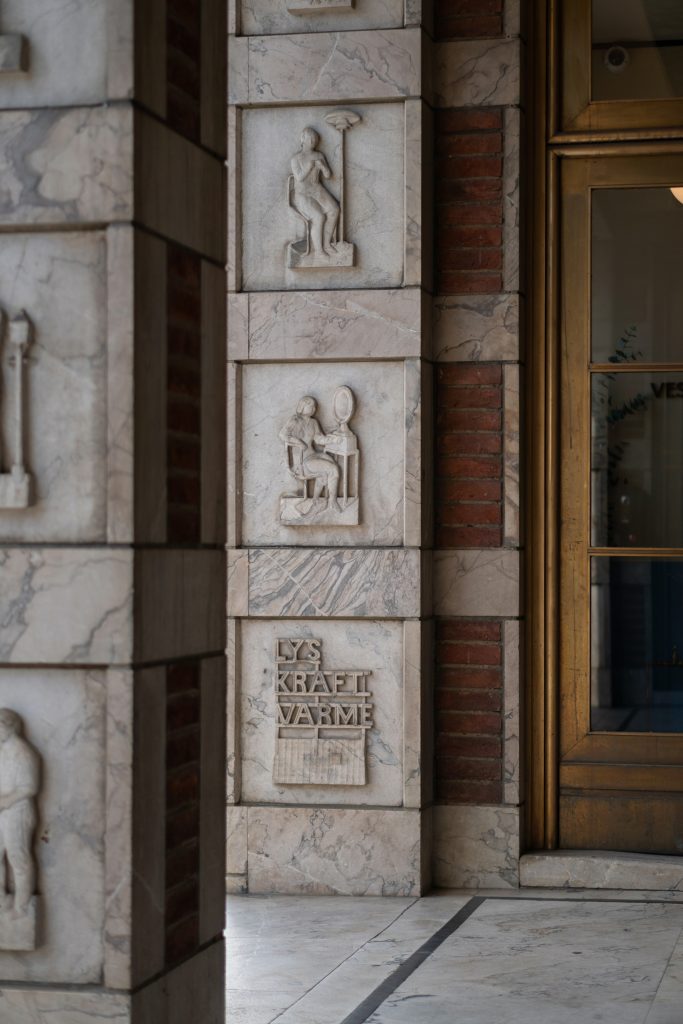
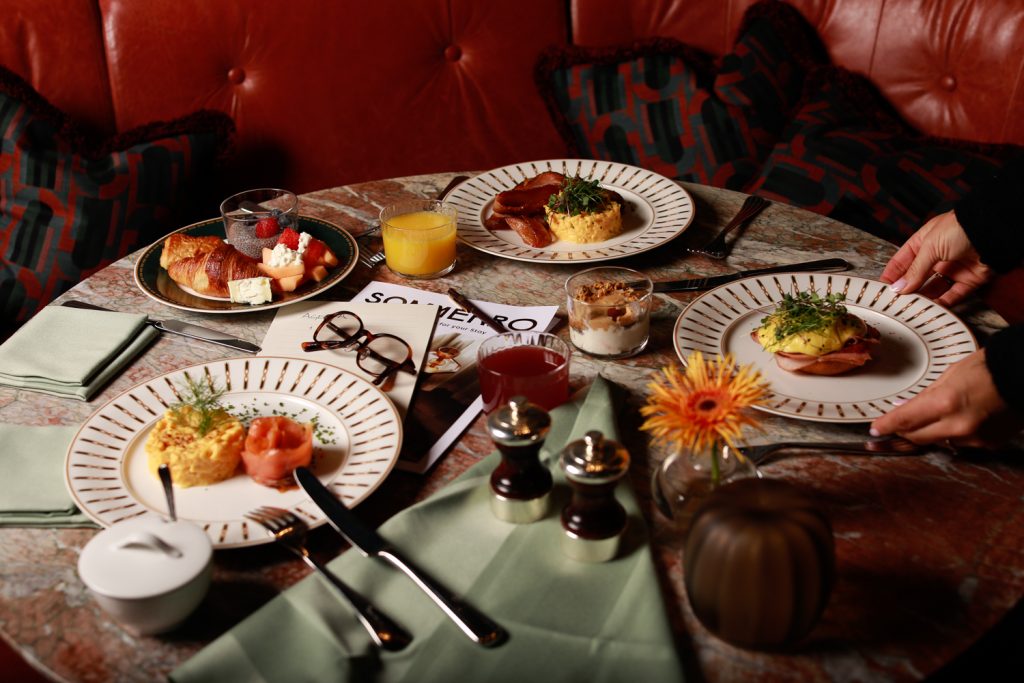
SOMETHING FOR
EVERYONE
At Sommerro, you can start your day with breakfast in our lively brasserie and end the evening with atmospheric live jazz – every single day. Take a refreshing dip in the newly restored Vestkantbadet and enjoy the facilities in our brand-new wellness and fitness area.
Invite friends to a private movie screening in our intimate cinema, or gather colleagues for inspiring meetings, pleasant lunches, or long, flavorful dinners in one of our many restaurants and bars. With us, everything is set for great experiences – whether you're here to relax, work, or celebrate.
ARCHITECHTURE
Perched on Solli Plass in Oslo’s elegant Frogner neighbourhood, Sommerro’s design is the work of renowned Norwegian architects Andreas Bjercke and Georg Eliassen, creators of iconic buildings like the neo-baroque headquarters for the Norwegian America Line.
Built over 13 years starting in 1917, the monumental structure blends neoclassical aesthetics, functionalist features, and glamorous art deco details. The sober brick façade is enhanced by bas-reliefs by sculptor Asbjørg Borgfelt, art deco elements, and rich details by artist Per Krohg, including murals and iconic mosaics.
Just as Oslo Lysverker once powered the city, Sommerro now serves as a positive force in Frogner, offering a place where you can work, enjoy, and sleep well. Our doors are always open!
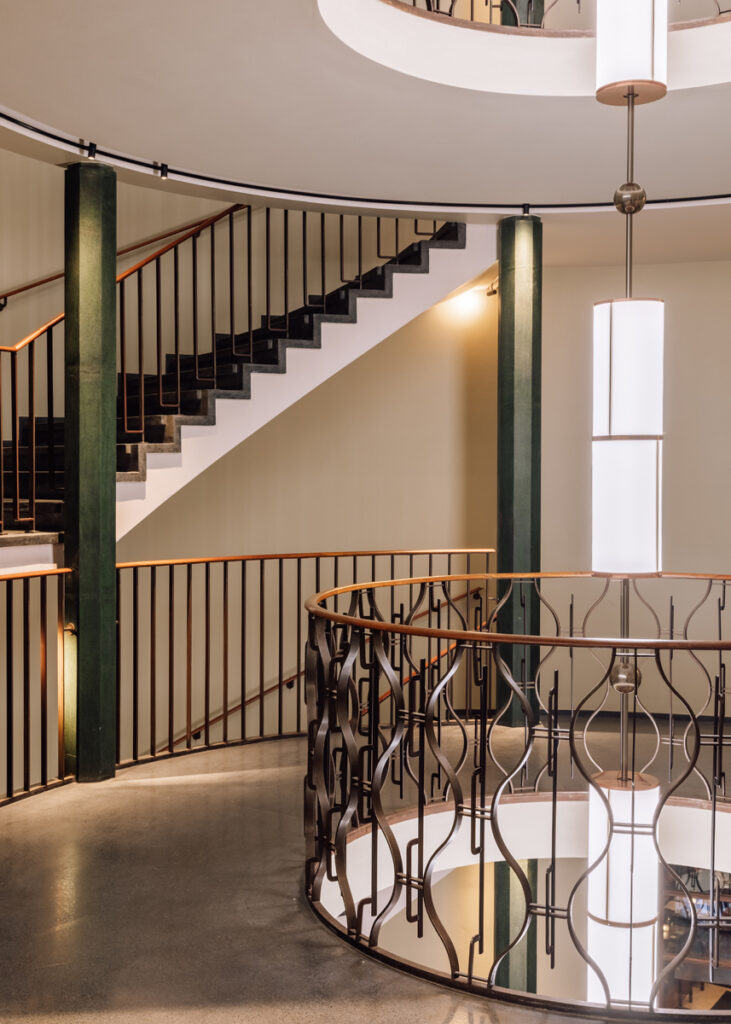
A cultural community hub
With a rich program of concerts and events, we offer cultural enrichment, inspiration, and new concepts throughout the year – from stand-up at Lysverker Scene and atmospheric movie nights in our intimate cinema, to concerts with some of Norway’s most beloved artists in the grand Ekspedisjonshallen.
Our halls, stages, and meeting rooms are available for private occasions, perfect for everything from intimate gatherings and dream weddings to creative workshops and brainstorming sessions with colleagues. Sommerro is a vibrant community where people come together, relax, and create memories – a home for both locals and visitors.
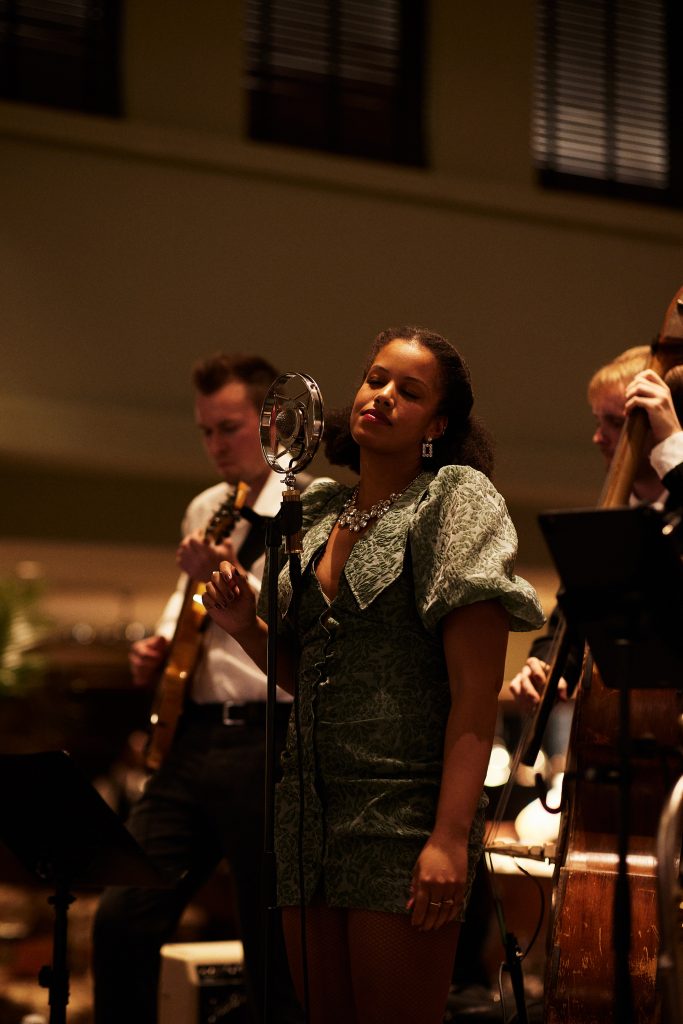
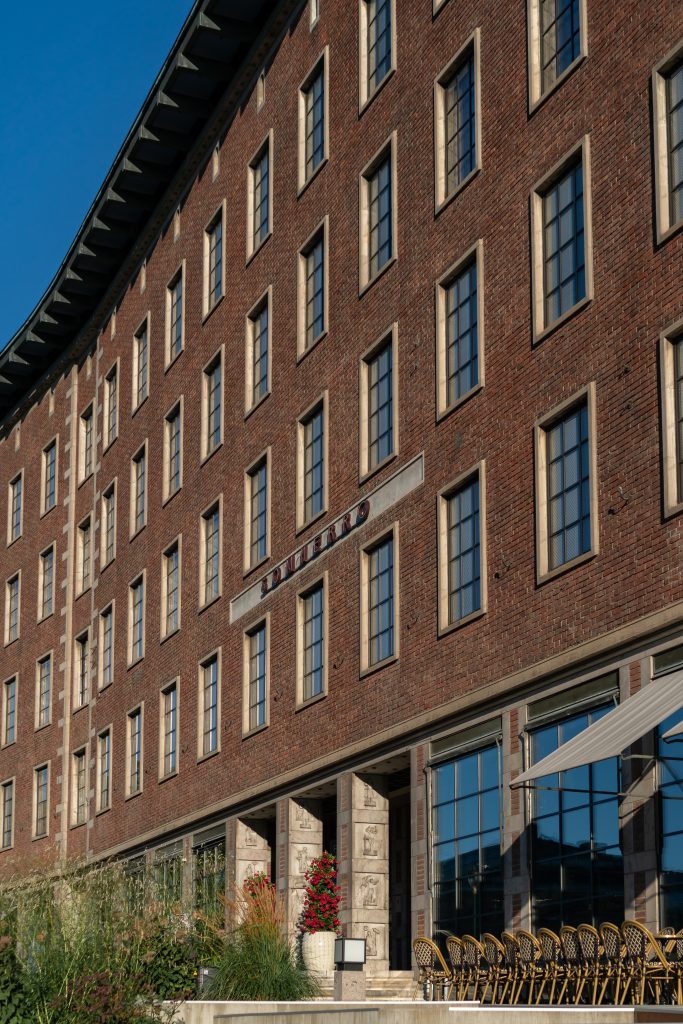
Our neighbourhood
In Oslo's west end, you'll find the idyllic Frogner, a vibrant neighborhood characterized by charming townhouses, impressive 19th-century apartment buildings, and a wide selection of restaurants, galleries, and boutique shops. This creates an intimate and welcoming local atmosphere where both residents and visitors can enjoy a relaxed yet urban vibe.
Sommerro is located in the heart of Frogner, at Solli Plass – just a stone's throw from the Royal Palace and Slottsparken, one of Oslo’s first large parks. Right across the street stands the National Library, and the famous Frogner Park with Gustav Vigeland's impressive sculptures is just a short walk away. Nearby, you'll also find Aker Brygge, home to the new National Museum, as well as a variety of shops, galleries, and eateries with stunning views over the Oslo Fjord.
With trams and buses right outside the door, you have easy access to Oslo’s best restaurants, cultural attractions, and scenic green spaces. Nationaltheatret Station, located nearby, offers quick access to both the subway and trains. From here, you can easily travel domestically or take the airport express to Oslo Airport and beyond.
Just like the Frogner district, Sommerro is a building with rich history, distinctive character, and a clear taste of city life.

